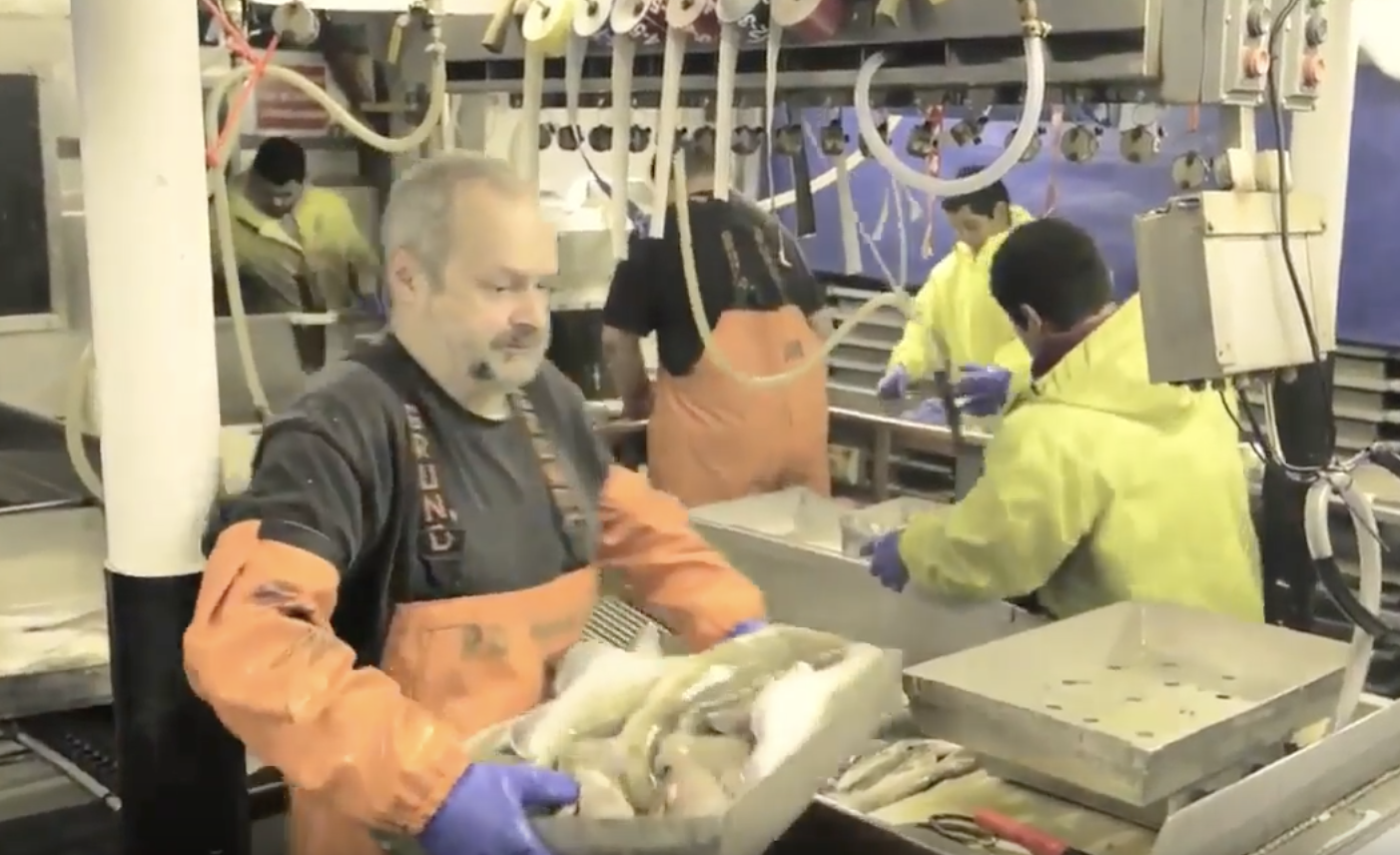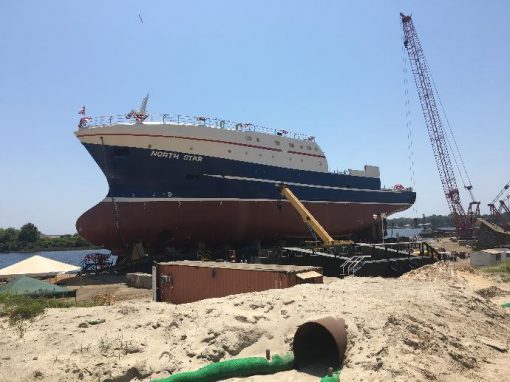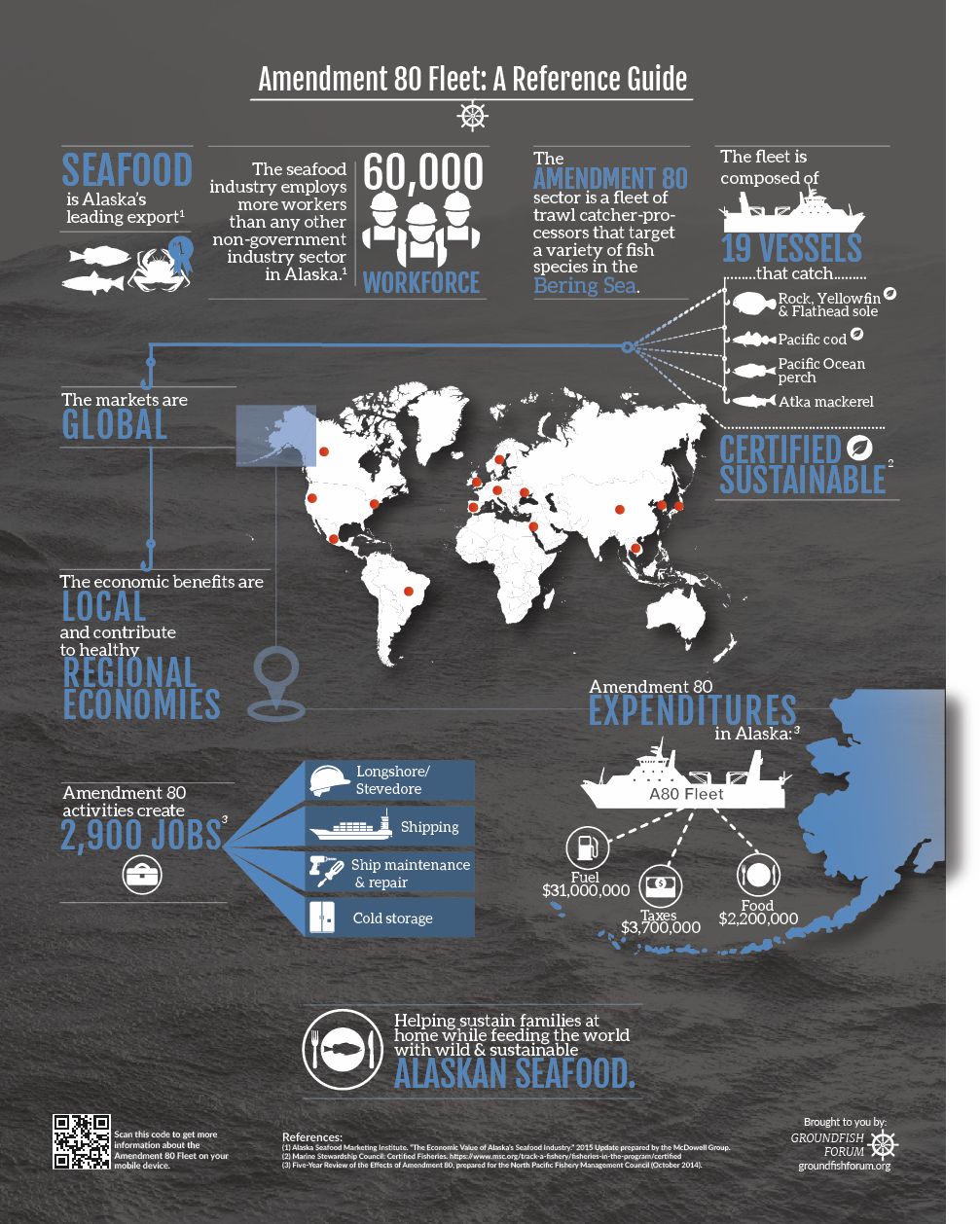SEAFOODNEWS.COM [SeafoodNews] by Jim Paulin, with material from John Sackton – June 27, 2018

NOAA has confirmed via email to people in the Alaska seafood industry that the 25% Chinese retaliatory tariff will not apply to re-processed products for export.
John Henderschedt, NMFS director of the Office of International Affairs and Seafood Inspection, wrote “In consultation with Embassy Beijing, NOAA Fisheries has confirmed that the following products are not subject to the additional 25% tariff recently announced by the Chinese government:
-Imports of U.S. seafood that is processed in China for re-export and some fishmeal products.”
“Affected U.S. seafood exports arriving at Chinese ports on July 6 or later will be subject to the new tariff rate,” he said in an email dated Tuesday, June 26th.
There was some uncertainty following China’s June 15 announcement at the beginning of a long holiday weekend for the Dragon Boat Festival that prevented clarification until government offices re-opened last Tuesday, June 19th, according to Jim Gilmore, Director of Public Affairs for the At-Sea Processors Association.
“Really, no one knew at that time, so the news coverage was of an issue with a lot of confusion and not much time for the U.S. government to get clarification. The holiday didn’t help matters, but it might also have been that the Chinese government language wasn’t clear. Not sure what factors were all at play,” Gilmore said.
One unresolved issue is that China has two types of import exemptions for re-processing for export. One involves no tariff, for products that are exempt, and the other collects the tariff, but then rebates the value back to the company when the product is exported.
One sentence in the Chinese announcement suggests that the 25% tariff will be applied to everything, but then rebated for products that are exported. When asked about this, Henderschedt had no comment.
If this is the final interpretation, the tariffs will add significant costs for exporters, even though they will ultimately get the 25% tariff refunded. For example, a Chinese plant that purchases 1000 tons of cod for re-processing and pays $3.6 million, would have to pay an additional $900,000 to bring the product into the country, but then get this money back when the product was exported. This adds costs to the process, even if the tariffs are ultimately not applied.
Ultimately, the answer will come after July 6th, when importers of record have to deal with Chinese customs officers.
Jim Gilmore says not much of offshore Alaska’s pollock is re-processed. His group, the At-Sea Processors Association, represents the Bering Sea pollock factory trawlers. He said that’s more common with salmon and cod.
But shore plants, especially in the Gulf of Alaska, export a lot of H&G pollock for reprocessing. In fact, Trident recently spent millions of dollars in the last several years to upgrade its plant in Kodiak to efficiently produce a frozen H&G product.
Also the Bering Sea Amendment 80 factory trawler flatfish fleet’s catch goes to China for reprocessing, especially yellowfin sole, according to Chris Woodley, executive director of the group’s trade association, the Groundfish Forum.
The vast majority of the U.S. exports of frozen seafood to China are reprocessed in China and then re-exported, Woodley said. Such U.S. exports to China that are then re-exported from China are not subject to Chinese duties or the Value Added Tax (VAT). However, U.S. seafood exports that are imported for consumption in China face high tariff rates. For example, frozen flatfish species, and other Alaska seafood exports to China that are consumed in China currently face a duty of 10 percent and are also subject to a 13 percent VAT.
The Dragon Boat Festival is held annually in honor of poet Qu Yuan, who drowned himself in a river in 278 BC, as a political protest. Villagers tried to save the beloved figure in their little boats, but when they couldn’t find him, they threw rice in the water in the hopes that the fish would eat the rice, and not the poet and activist, during the Warring States period of Chinese history.
By Hal Bernton, Seattle Times, June 2, 2016 —

The Seafreeze America, formerly the Navy vessel John McDonnell, was converted by U.S. Seafoods to fulfill a new role in its fleet working in the Bering Sea, Aleutian Islands and the Gulf of Alaska. (Mike Siegel/The Seattle Times)

The fishing vessel Alliance, docked on Lake Union, is being replaced by the Seafreeze America. (Mike Siegel/The Seattle Times)
Seafreeze America’s $30 million conversion is the latest investment in the local fleet of catcher processors that work off Alaska.
Seattle’s fishing industry on Thursday feted the latest addition to the fleet, a 233-foot former Navy oceanographic vessel overhauled at a cost of more than $30 million for a new line of work — catching and processing fish off Alaska.
The Lake Union ceremony drew several hundred people to watch the traditional breaking of a Champagne bottle across the bow of the former John McDonnell, newly christened as the Seafreeze America.
Later this month, the ship will head north to harvest yellowfin sole and other species in the Bering Sea.
In a Seattle increasingly swept up in a tech boom, the SeaFreeze Amercia offers a reminder of the vitality of an older and still potent Puget Sound industry.
“My whole thing is that it’s important for Seattle to maintain a diverse infrastructure,” said Matt Doherty, president of United States Seafoods, which owns SeaFreeze America. “Everyone is not a computer programmer.”
The SeaFreeze America was overhauled in Seattle with the assistance of a wide range of maritime vendors.
United States Seafoods employs some 450 people with a fleet of nine vessels that will be fishing this summer. Some 50 to 70 will crew on the SeaFreeze America.
The ship will work in what is known as the Puget Sound-based “head and gut” fleet, a group of vessels that use trawl nets to scoop fish off the sea bottom, and then process them on board. Much of the harvest is sent to China, where it is reprocessed and then sent to markets in Europe, North America and elsewhere.
Over the decades, the head and gut fleet has aged, and maritime tragedies — including the 2008 sinking of the Alaska Ranger that claimed 5 lives — raised safety concerns. Meanwhile, federal regulatory restrictions effectively prevented any new replacement vessels.
Those restrictions have been lifted, and several companies in the fleet are now investing in new vessels, said Chris Woodley, executive director of the Groundfish Forum, an industry trade association.
Under the harvest system now in place, United States Seafoods won’t be able to catch more fish by operating the Seafreeze America.
But for crews who labor for days on end in often-rough seas, the Seafreeze America will offer a safer platform than the much smaller vessel it will largely replace. And the state-of-the-art processing operations will enable the company to turn out more high-value products and reduce discards.
“It allows us to maximize the use of the fish that we are already are catching,” Doherty said.




